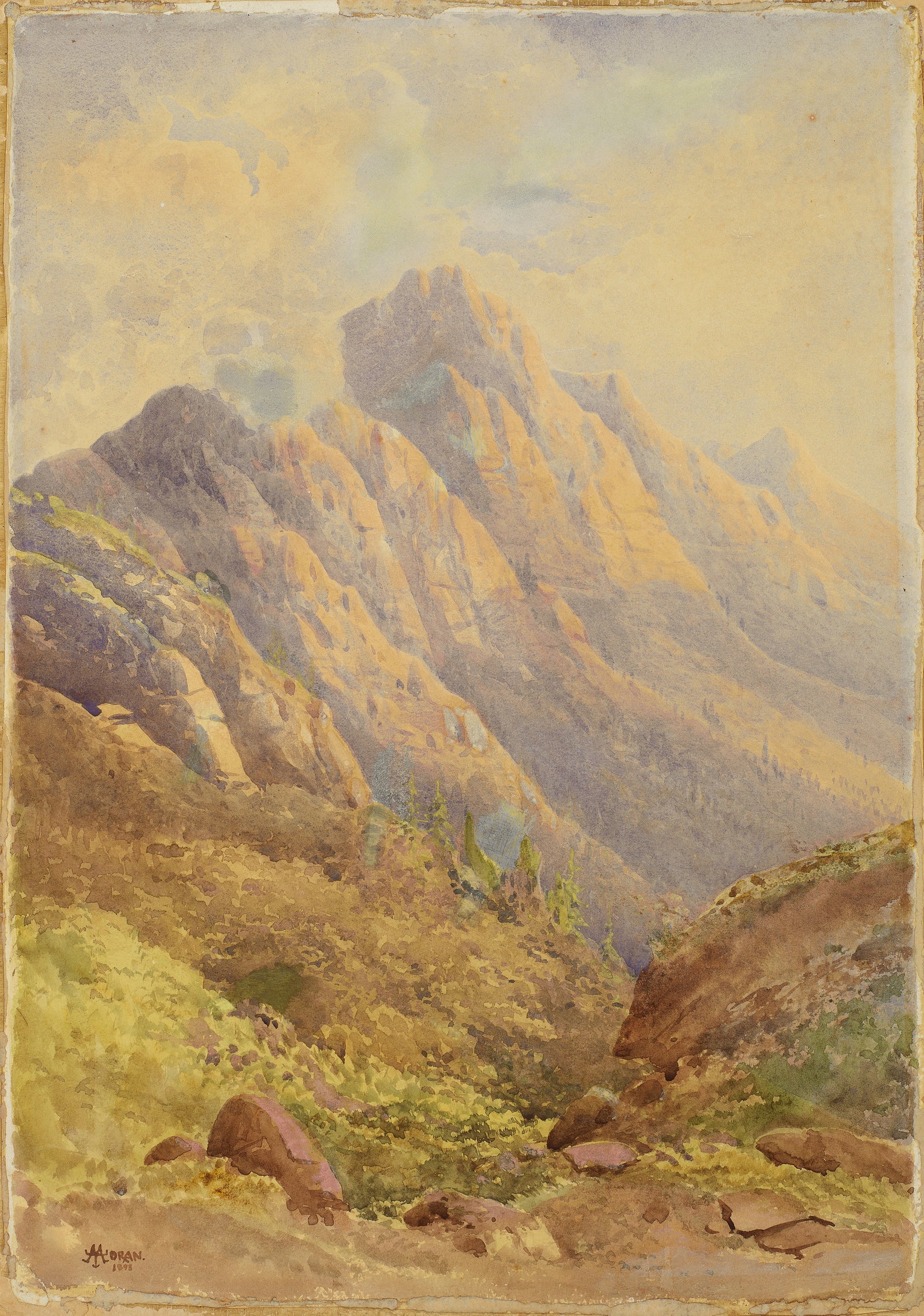Excerpts from "Thomas Moran in Utah" by Gaell Lindstrom

On July 9, 1873, Thomas Moran wrote to his wife Mary from Salt Lake City: "In the afternoon Powell and I went to Brigham Young's house and I was introduced to all the leading Mormons. There was Brig[ham] Young. Geo. A. Smith second man in power. Bishop Nusser [Musser]. Bishop Cannon. The editor of the Mormon paper and delegate to Congress. Bishop Hooper and some other Mormon high priests. They are very much like the rest of mankind and all smart fellows." Moran came to Salt Lake via the Union Pacific Railroad to meet John Wesley Powell of Colorado River fame. It had been less than four years since Major Powell started his first trip down the Green to the Colorado and through the Grand Canyon of Arizona. Powell was on good terms with the Mormons, and as the Indian commissioner, he was charged with investigating the welfare of the Indians in Utah. Brigham Young and Powell shared this common interest in further exploration of the Utah Territory, Powell for the sake of science and personal curiosity and Brigham Young for the sake of extending Mormon colonization. Moran, Powell, J. E. Colburn, a writer for the New York Times, and James C. Pilling, Powell's secretary, were headed south to the Grand Canyon. All had interests in the unknown and the scenic. Moran had commissions for illustrations from eastern publishers, and Colburn was on assignment for the New York Times. For some reason, Colburn preferred not to meet Brigham Young and stayed in his room at the Walker House.
The group left Salt Lake on the Utah Southern Railroad and rode it all the way to Lehi, a grand total of 30 of the almost 400 miles ahead of them. In describing Salt Lake City's extraordinary setting, including Mount Olympus...
By the time Moran was thirty years old, he was a recognized and accomplished artist. In 1861, he was in London studying the works of Joseph Mallord William Turner and Claude Lorraine. He was in Europe again in 1866 and with his wife Mary spent a year studying and painting. Moran developed a taste for the works of Turner but said he cared nothing for Turner's later works. Despite this, Moran seemed to follow Turner's use of color is his more abstract later works. So great was Moran's admiration for Turner that he spent much time making firsthand copies.



